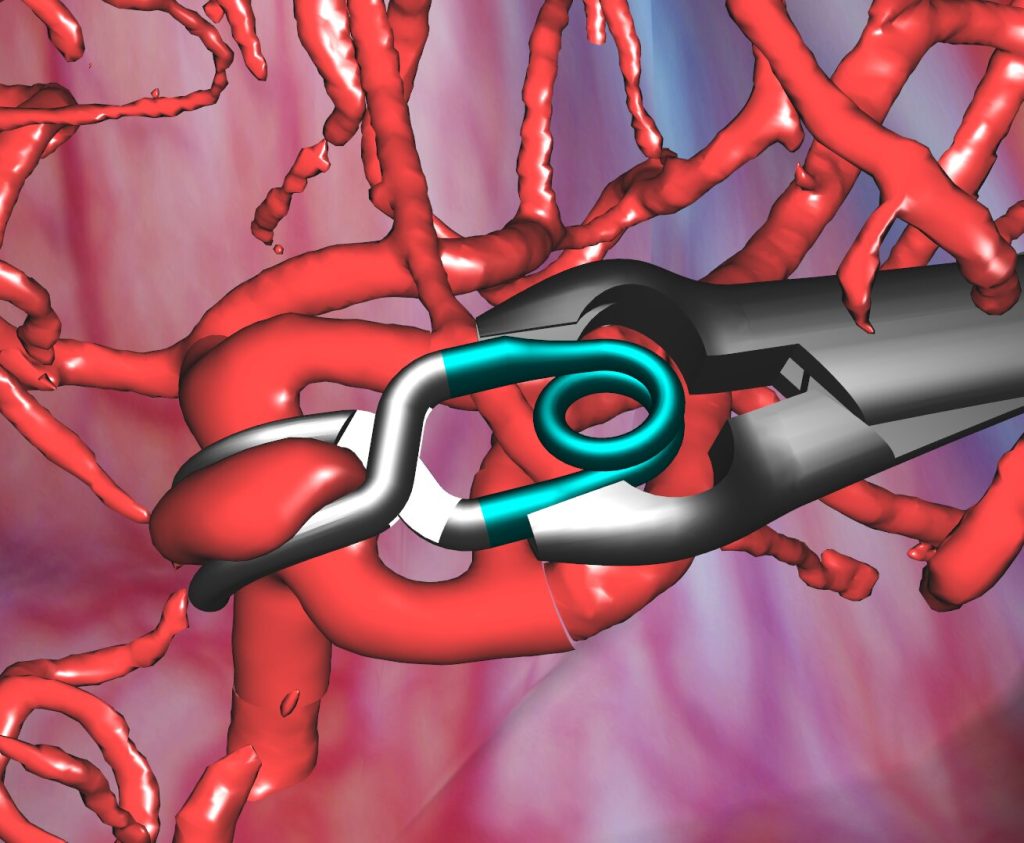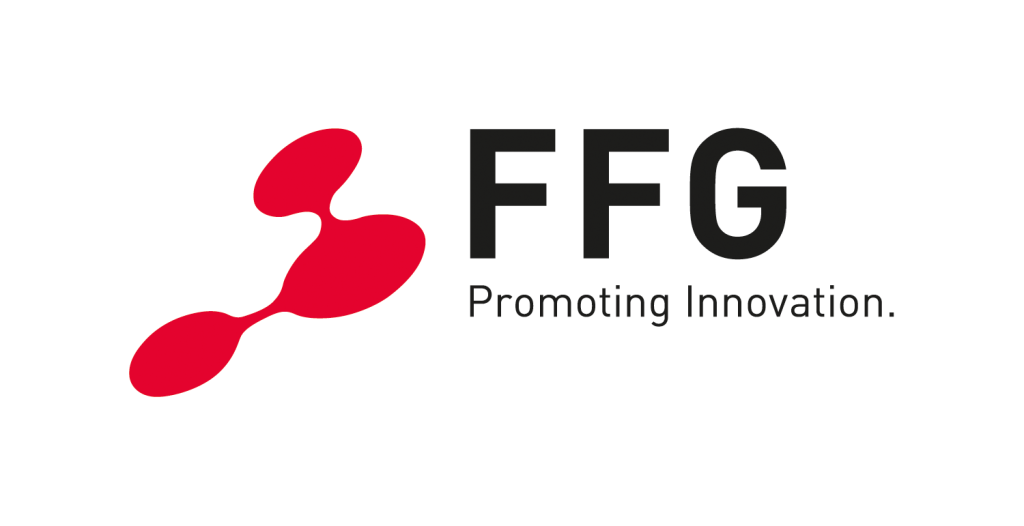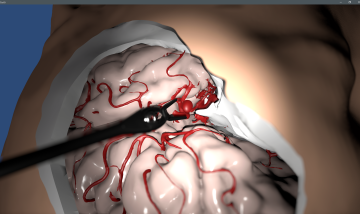Virtual Aneurysm: Simulation, Training and Assessment of Neurosurgical Interventions
Disorders of blood circulation in the brain (strokes and cerebral haemorrhages) are among the most common causes of death in western industrialized countries. Intracranial aneurysms, one of the main causes of bleeding, can basically be treated using two different strategies: In the minimally invasive, endovascular method (coiling), the aneurysm is filled via a catheter with a wire coil, while in the neurosurgical method (clipping), the skull is opened and one or more titanium clips are placed on the artery to clamp the aneurysm from the bloodstream.
Simulator for training clipping operations
As the endovascular procedure is increasingly employed for simple aneurysms, clipping is now reserved for complex cases. For aspiring neurosurgeons, it is becoming more challenging to encounter straightforward situations to develop the necessary expertise for complex cases. The research department of Medical Informatics aims to address this issue with the VIRTUAL ANEURYSM surgical simulator. It facilitates training for clipping procedures in various virtual scenarios, equipped with two haptic input devices with force feedback and a stereoscopic display. Users can choose from multiple aneurysm geometries with varying difficulty levels and select from a list of over 50 3D-modeled clips of different sizes and shapes.
At the beginning of the training, users practice the correct head positioning and optimal placement of the craniotomy for each case. During the actual clipping operation, the simulator continuously detects collisions between instruments and tissue and responds accordingly. The realistic deformation of blood vessels is calculated and visualized in real-time using a specially optimized finite element method on the GPU (Graphics Processing Unit). The resulting forces are sent to the haptic devices, allowing the trainee to feel the resistance of the tissue. Attached to one of the devices is a clipping forceps with a sensor to measure the opening angle, which is transmitted to the simulator in real-time. Depending on the chosen difficulty level, a rupture may occur, and the surgeons must stop the bleeding and manage the ruptured aneurysm within a specified timeframe.
Objective training evaluation
After completing the training, users can examine their results from all perspectives. To achieve an objective assessment of the training, blood flow through the artery with the clamped aneurysm is calculated. This allows, among other things, an estimation of the induced stenosis and the residual flow into the aneurysm, which contributes to a final evaluation scheme. All training data for each user are stored and can be visualized and compared at any time.
Funding and cooperation
his project was funded by the province of Upper Austria and by the Austrian Research Promotion Agency (FFG) within the BRIDGE program. Project partners were the Kepler University Hospital Linz (Neuromed Campus and Med Campus III, formerly AKH Linz) and the German medical technology manufacturer Aesculap AG, world market leader for hand-held surgical instruments. The research results form(ed) the basis for the subsequent MEDUSA project.



This project was funded by the province of Upper Austria and by the Austrian Research Promotion Agency (FFG) within the BRIDGE program.


Project partners




Project details
- Project short title: Virtual Aneurysm
- Project long title: Virtual Aneurysm: Simulation, Training and Assessment of Neurosurgical Interventions
- Project parterns:
RISC Software GmbH, Research Unit Medical Informatics (Consortium Leadership)- Kepler Universitätsklinikum Linz, Universitätsklinik für Neurochirurgie
- Oberösterreichische Gesundheitsholding GmbH (OÖG)
- Aesculap AG
- Funding Call: Bridge – 16th Call (Austrian Research Promotion Agency – FFG)
- Total Budget Volume: 355,000 EUR
- Total Funding: 213,000 EUR
- Duration: 01/2013 – 06/2015
Contact person
Project management

Dr. Michael Giretzlehner
Head of Research Unit Medical Informatics
